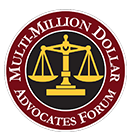Non-Bite Injury Claims
Non Bite Injuries, Lawyers and Lawsuits
There is no doubt that the primary weapon a dog has to attack perceived threats is its teeth. A dog’s teeth are sharp, designed to puncture deep into the skin and muscle of the animal or human it is attacking. However, a dog can still be dangerous even if it is not able to bite you. A dog’s paws, the power of its jaws, and even its size and weight can all be used to inflict injuries that can be just as serious – and in some cases more so – as its bite.
A Dog’s Other “Weapons” to Inflict Non Bite Injuries
When a person is attacked by a dog, the dog is striving toward one goal – dominance over the person and the neutralization of that person as a threat. This is why dogs attack the face and neck – if a dog is able to inflict substantial injuries to the head and neck, the threat will be incapacitated. When a dog is attacking a human and it is unable to attack the face and neck, a dog will attempt to take out the human’s other potential “weapons” – the human’s arms and/or legs. A dog can accomplish these goals using its:
- Jaws: The jaws of any canine contain many powerful muscles that can enable the dog to not only pierce through skin and muscle but also cause painful, crushing-type injuries. The jaws of large dogs may be able to crush bones, but even smaller dogs may be able to inflict crushing-type injuries to a person’s nerves (especially if the dog bites a small, vulnerable body part such as a finger or a body part in which there are a lot of nerves near the surface of the skin (such as a person’s face);
- Claws: In addition to its teeth and jaws, a dog will use its claws during an attack. While a dog’s claws generally do not cause the type of deep puncture wounds associated with a dog’s teeth, a dog’s claws can nonetheless cause cuts and lacerations. If a dog is able to attack a person’s face, these cuts and lacerations may cause temporary or permanent damage to vulnerable areas, such as the eyes. If these cuts and lacerations are not properly cleaned and treated, infection may set in and exacerbate the harm.
- Size and Weight: Some large breeds of dogs utilize their size and weight as a weapon during an attack. These dogs will attempt to jump and push a human to the ground, and will then pin the human down by standing on top of the human. Not only does this immobilize the human and prevent the human from escaping, but it also can cause difficulty breathing and crushing injuries.
While medical attention should focus on deep bites and wounds that are bleeding profusely, dog attack victims and medical professionals that attend to them should not neglect these other injuries that the victim may have been sustained in the attack.
Minimizing Non Bite Injuries
If you or a loved one find yourself being attacked by a dog, the first few actions you take will help determine the severity of your injuries. You should consider:
- Stopping and rolling as tightly as possible into a ball. You will not outrun a dog, and running from a dog stimulates the dog’s natural hunting instinct. Instead, stop and curl into a ball. Attempt to protect your face, chest, and stomach as these areas are vulnerable in a dog attack.
- Protect your neck and ears with your hands and arms. While this will expose your hands, fingers, and arms to potential injury, it will protect your ears, neck and spinal cord – much more sensitive and vulnerable parts.
- If you are curled into a defensive posture (as described above), resist the urge to thrash back or attack the dog unless the dog is threatening a vital body area. A dog may stop attacking if it believes you are not a threat and/or the dog is not able to deliver fatal or disabling blows.
When and if the dog ceases its attack, resist the urge to run from the scene as this may cause the dog to reengage you. Instead, walk away from the dog in as calm a manner as possible and keep your arms and hands at your side. Do not look directly at a dog (this can be perceived as a sign of aggression), but do not let the dog escape your field of vision – you may need to resume a defensive posture if the dog attempts to attack again.
Why Should I Call a Non Bite Injury Attorney
Just as dog bite injuries can result in significant medical bills, lost wages, and pain and suffering, so too the financial and noneconomic toll of non bite injuries can be severe. All state laws place some degree of responsibility on a dog’s owner for the harm that their dog causes, but these laws differ in several important regards. Attorney Ken Stern and Stern Law, PLLC are prepared to help you obtain financial compensation for your non bite injuries and losses and they have the knowledge and experience necessary to do so. Call Stern Law, PLLC at (844) 808-7529 and let attorney Ken Stern advocate for the damages you need.













